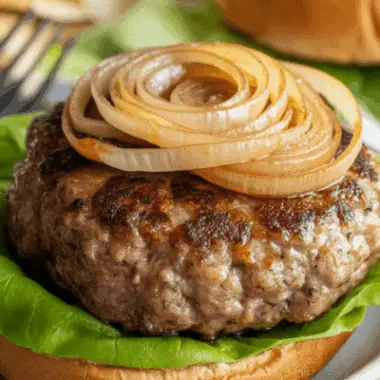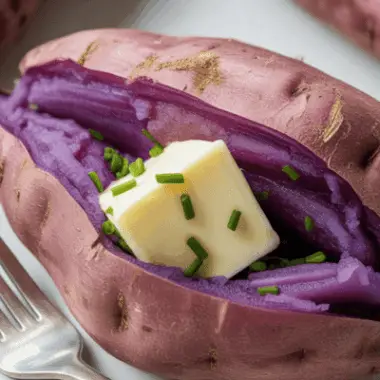Pesto pasta salad is one of those dishes I find myself making over and over, especially when the weather warms up and the basil plants outside start going wild. It’s bright, fresh, and such an easy way to make pasta feel special without turning on the oven.
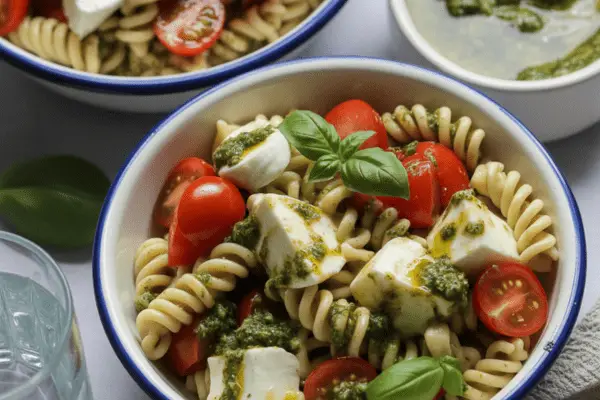
But here’s the thing—I’ve had plenty of mediocre pesto pasta salads in my day. Dry, bland, weirdly sticky. So over the years I’ve figured out a few reliable tricks to make sure this version is anything but boring.
This is the pesto pasta salad I bring to summer potlucks, pack for picnics, or just make ahead for a week of lazy lunches on the porch. It’s simple, flavorful, and stays creamy even after sitting in the fridge overnight.
Why Make Pesto Pasta Salad This Way
It’s easy to think you can just stir pesto through cold pasta and call it a day. And you can. But you might end up with sad, clumpy pasta that tastes like…nothing.
Here’s why I do it the way I do:
- Don’t skimp on pesto: I’m always generous here. If you’re going to make a pesto pasta salad, make it taste like pesto!
- A little olive oil is your friend: Helps keep things glossy and prevents that dreaded dry texture.
- Cook the pasta a little beyond al dente: Cold pasta firms up. Cooking it just a touch more ensures it’s tender but not mushy after chilling.
- The mayo trick: Just a couple of tablespoons add a subtle creaminess that makes it feel luxurious. It keeps leftovers moist and delicious for days.
When I follow these little rules, I know I’m going to have a pasta salad that’s worth eating—even two days later.
What You’ll Need for the Pesto
Homemade pesto is my go-to here, especially in summer when basil is cheap and everywhere. But I’ll be honest—if I’m short on time, the fresh store-bought kind from the refrigerated section is perfectly fine.
Here’s what I usually use for homemade:
- Fresh basil: Summer’s best. I sometimes buy the giant bunches at the farmers market just for this.
- Parmesan: Or if I’m feeling fancy, parmigiano reggiano. The nutty, salty richness is non-negotiable for me.
- Pine nuts: I toast them for extra flavor. When they’re pricey or sold out, walnuts or cashews are surprisingly good swaps.
- Olive oil: Sometimes I mix with grapeseed oil for a lighter flavor that lets the basil shine.
- Garlic: Just enough for a gentle bite. I’m careful not to overdo it since raw garlic can be aggressive.
I blitz mine with a stick blender in a tall jar—way easier to clean than a food processor and gives me a smoother pesto that clings beautifully to pasta.
Ingredients for the Pasta Salad
This is the part that makes the salad feel like a meal instead of just a side.
- Pasta: I use spirals most often because they hold the sauce so well, but any short shape works. Shells, penne, wheels if you want to have fun.
- Mayonnaise: Just a couple tablespoons. Not enough to make it taste like a mayo pasta salad, but just enough to keep it creamy. Trust me, it’s a game changer.
- Bocconcini: Little mozzarella balls that add soft, creamy bites throughout.
- Cherry Tomatoes: Sweet, juicy, and they look so pretty in the mix.
- Rocket (Arugula): For that peppery freshness that cuts the richness of the pesto. It keeps the salad from feeling too heavy.
I love this combo, but you can absolutely make it your own with whatever you have on hand.
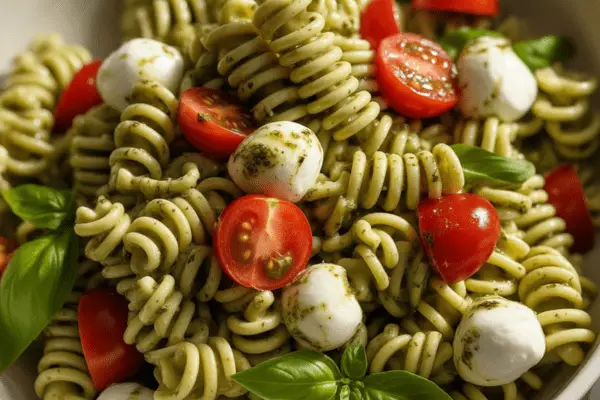
How I Make Pesto Pasta Salad
I know pasta salad seems straightforward, but a couple of little details really do make all the difference.
Cook the pasta past al dente
I always give it an extra minute or so. When pasta cools, it firms up. If you cook it just to al dente, it can end up hard in the fridge. Cooking it slightly more keeps it tender even when cold.
Rinse in cold water
I know some people avoid this, but for pasta salad it’s essential. It stops the cooking and washes away excess starch so you don’t end up with a sticky, clumpy salad.
Mix in stages
I always start by mixing the pasta with the pesto and mayo first. That way every piece is coated evenly.
Then I gently fold in the tomatoes and bocconcini so they don’t get smashed.
Last, I toss in the rocket quickly so it doesn’t get weighed down and soggy. No one wants pesto-clumped greens.
My Pesto Tips
Over the years I’ve tried a lot of ways to make pesto. Here’s what’s worked for me:
- I use a stick blender because it gives me a smoother sauce that hugs the pasta. Food processors work too but sometimes leave it chunkier.
- I’ll toast the nuts for more depth of flavor.
- If basil is expensive, I’ll swap half of it for baby spinach to bulk it up without losing the green freshness.
- Always taste and adjust. Sometimes a little extra cheese or a squeeze of lemon juice at the end makes it perfect.
I make big batches in summer and freeze extra in ice cube trays for quick dinners later on.
How to Assemble the Salad
Here’s how I usually do it:
- Cook the pasta in salted water for a minute or so longer than the package says. Drain and rinse under cold water.
- Toss with pesto and mayo first while the pasta is still slightly warm. It helps the sauce soak in better.
- Add the cherry tomatoes and bocconcini next, folding gently so you don’t crush them.
- Finish with the rocket last, just giving it a light toss so it stays fluffy and doesn’t get bogged down with sauce.
I love serving this in a big bowl family-style, letting everyone scoop out their own.
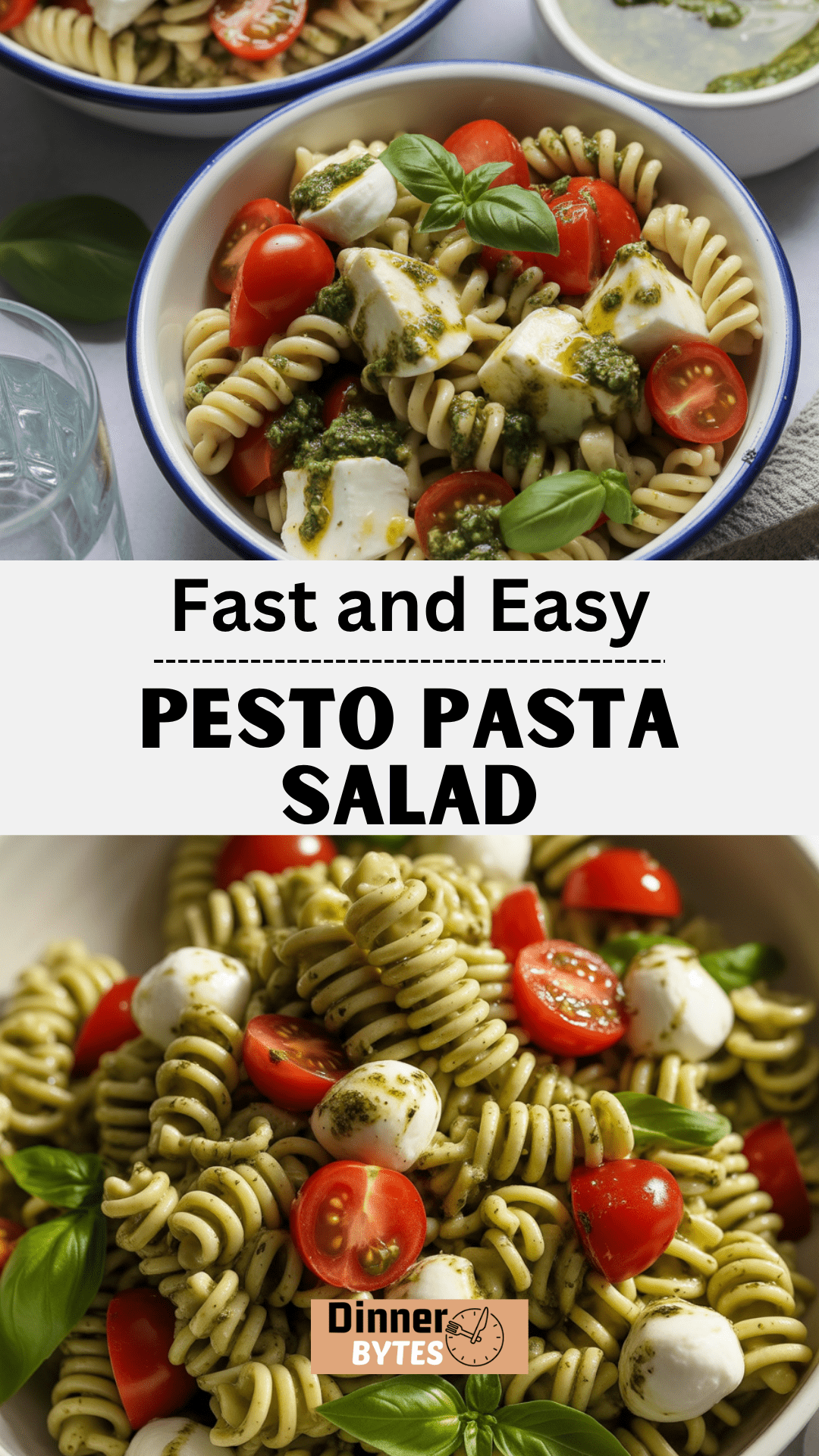
Storing Leftovers
I always make extra because this salad holds up well in the fridge.
- It’s best in the first few hours after making, when the green color is brightest.
- But it still tastes great for up to two days. The mayo really helps it stay creamy without drying out, unlike some pasta salads that go stiff and sad overnight.
- I store it in a covered container and sometimes add a fresh splash of olive oil before serving to perk it up.
Pesto Pasta Salad

This pesto pasta salad is one of those dishes you’ll want on repeat.
Ingredients
- 350g / 12oz spiral pasta (fusilli, or other of choice, 3 1/2 cups)
- 1 tbsp salt for cooking pasta
- 2 tbsp pinenuts toasted (sub walnuts, cashews, almonds)
- 2 cups (tightly packed) basil leaves
- 1 small garlic clove minced 1/2 cup parmesan finely grated
- 1/2 tsp cooking/kosher salt
- 1/4 tsp black pepper
- 7 tbsp extra virgin olive oil (or 50/50 grapeseed/olive oil)
- 2 tbsp mayonnaise (S&W, else Hellman’s)
- 250g (1 heaped cup) cherry tomatoes cut in half
- 220g/7 oz baby bocconcini drained cut in half
- 1 cup (tightly packed) baby rocket/arugula leaves (40g)
- 1/2 tsp cooking/kosher salt
- Small basil leaves optional garnish
Instructions
- Start by cooking the pasta in a big pot of salted boiling water, letting it go for the package time plus an extra minute to get it just right.
- Once it’s done, drain it well in a colander and rinse under cold water to cool it off.
- Shake off as much water as you can and set it aside to finish drying and cooling completely. For the pesto, combine all the ingredients in a tall jug just big enough for your stick blender.
- Blend it until it’s mostly smooth with a little texture—think creamy with some tiny green flecks instead of big chunks. In a large bowl, toss the cooled pasta with the pesto and the mayonnaise until everything is nicely coated.
- Gently fold in the halved bocconcini and cherry tomatoes so they’re evenly mixed without squashing them.
- Finally, add the rocket or arugula and give it one last gentle mix to distribute the greens. Pile it all into a serving bowl and top with a scattering of small basil leaves if you like.
Notes
- Serves 4 to 5 as a main, or 8 to 10 as a side (or even more if it’s part of a bigger spread). Homemade pesto really shines here, but if you’re using store-bought aim for just under 1 cup and try to choose the kind from the fridge for a fresher flavor.
- The mayo isn’t meant to turn this into a creamy salad—it just keeps things juicy and stops the pasta from drying out. If you’d rather skip it, add two extra tablespoons of olive oil instead.
- Baby bocconcini are those soft, mild mozzarella balls that work so well in pasta salads, especially with pesto.
- Leftovers hold up for a good two days, though the color will fade a bit. Store it in the fridge in a really airtight container to keep it as green as possible, and bring it back to room temperature before serving for the best flavor and texture.
Nutrition Information
Yield
5Serving Size
1Amount Per Serving Calories 494Total Fat 34gSaturated Fat 9gTrans Fat 0gUnsaturated Fat 23gCholesterol 36mgSodium 2067mgCarbohydrates 32gFiber 2gSugar 1gProtein 16g
dinnerbytes.com, occasionally offers nutritional information for recipes contained on this site. This information is provided as a courtesy and is an estimate only. This information comes from online calculators. Although dinnerbytes.com attempts to provide accurate nutritional information, these figures are only estimates.

